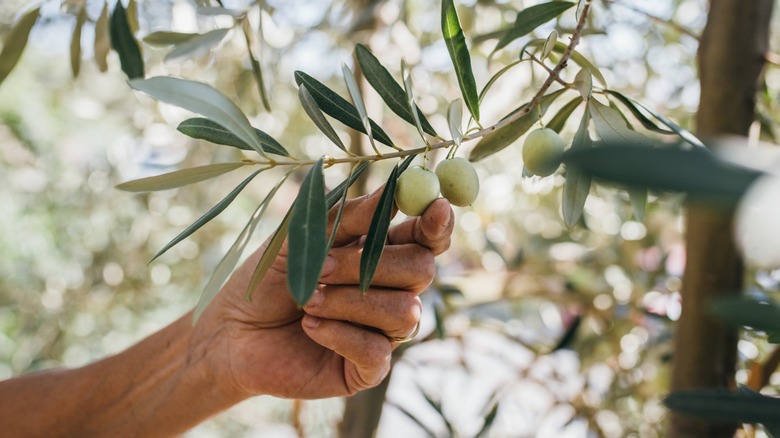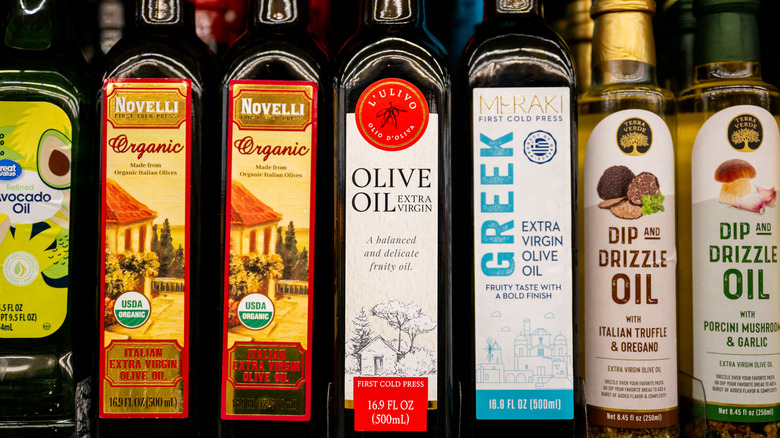Why Olive Color Makes All The Difference When Making Oil
Have you ever wondered whether olive oil is made from green olives or black olives? The answer is both — and neither. The green olives you find in stores aren't a special green variety; as they age, olives shift from green, then to mottled yellow, then to a dark, ripe, purpley black. These changing colors are a vital part of the harvesting process. Olive farmers want to try to catch olives when they'll produce both a high yield of oil and a complex flavor, but it's a delicate balance. As olives mature, their fat content increases, leading to an oilier fruit. Mature olives laden with oil are easier for mechanical harvesters to pick, too.
But green olives, picked early in the season, typically produce more flavorful olive oil that's full of antioxidants. Oil made from green olives tends to have a more robust, peppery flavor with an acidic tang. Olives picked later in the season after turning dark, meanwhile, have a fruitier, milder taste. The exact right time to harvest olives for oil depends on the variety. Some types of olives, like Genovesa olives, are harvested before they start to ripen. However, as a general rule, the best time to harvest olives is partway through the process when they start to turn mottled. This indicates a fruit that is well-ripened and features a great variety of aromas and flavors, but is not yet ready to fall off the tree.
The color of olive oil doesn't matter (much)
The color of the resulting olive oil might matter to producers, but it's not something that you, as a consumer, need to worry about. An oil's color has no bearing on its quality, and it isn't necessarily a good indicator of flavor, either. Still, there are some general rules. Dark green olive oils, which are made from olives picked early in the season, tend to have a stronger and more peppery taste. Lighter more golden oils, meanwhile, are typically made from late-season olives, which often gives them a mild and buttery taste.
But looks can be deceiving. The color of the oil can change over time, which is why pros avoid going off color alone. In fact, professional olive oil tasters even use dark-colored cups so that they aren't accidentally influenced by the fluid's hue. However, consumers like to see the color of the oil, so companies sometimes package olive oil in clear bottles. Avoid these. Olive oil oxidizes and becomes rancid when exposed to heat and sunlight, so you'll always want to buy olive oil packaged in tinted glass.
But if you can't go off color, what should you go off of? Tasting Table spoke with an expert for some olive oil shopping guidance. She advised us to check for descriptors on the bottle. High-quality olive oils tend to have plenty of information about the oil's origin, flavor profile, and production. Even if you don't know what terms like "extra-virgin" or "first-pressed" mean, the presence of these descriptors alone tends to indicate that you're getting a good product. And, as always, aim to select the freshest bottle — which, in the case of olive oil, means that it has been harvested or bottled within 18 months.

